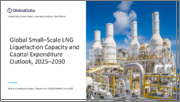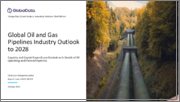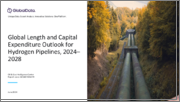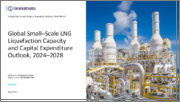
|
시장보고서
상품코드
1446432
세계의 설비 투자 시장 : 자산 유형별, 산업별 기회 분석 및 산업 예측(2023-2032년)Capital Expenditure Market By Asset Type, By Industry Vertical : Global Opportunity Analysis and Industry Forecast, 2023-2032 |
||||||

설비 투자(자본지출, Capital Expenditure)는 토지, 기계, 공장, 건물 또는 기술과 같은 회사의 물리적 자산을 업그레이드, 취득, 관리, 수리 또는 유지하기 위해 지출한 총 금액입니다. 지사, 투자 또는 신규 프로젝트를 시작할 때뿐만 아니라 사업을 구상할 때에도 사용됩니다.
또한, 부동산 업계에서는 투자자, 물류 자산을 구매하거나 임대하려는 기업, 제조 공장의 수요가 계속 증가하고 있습니다. 현대식 창고, 유통 허브, 제조 공장에 대한 수요로 인해 전 세계적으로 상업용 토지 매입과 신규 시설 건설에 상당한 규모의 자본이 유입되고 있습니다. 리쇼어링, 도시화, 전자상거래의 긍정적인 추세로 인해 산업 및 물류 부동산 자산 개발에 대한 설비 투자와 지출이 증가하고 있습니다.
게다가 그린필드 시설, 신공장, 생산현장 근대화에 대한 투자 급증이 세계 설비투자시장 성장을 뒷받침하고 있습니다. 게다가 재생가능 전력, 청정연료, 지속가능한 기술로의 시프트 등 요인이 다액의 설비투자를 필요로 하고, AI, IoT, 블록체인, 클라우드 플랫폼 등 신흥기술에 대한 설비 투자 할당이 시장 성장에 긍정적인 영향을 미칩니다. 그러나 지정 긴장 증가, 무역 분쟁, 공급망의 혼란은 프로젝트 일정에 영향을 미치고 시장 성장을 방해합니다. 한편, 대규모 인프라 프로젝트에 대한 투자 증가와 통신 사업자에 의한 5G 인프라 전개는 예측 기간 중 시장 확대에 유익한 기회를 제공할 것으로 기대됩니다. 이러한 각 요인은 설비 투자 시장 성장에 확실한 영향을 미칠 것으로 예상됩니다.
설비 투자 시장은 자산 유형, 산업별, 지역별로 구분됩니다. 자산 유형별로는 BFSI, 석유 및 가스, 광업, 헬스케어, 제조, IT 및 통신, 부동산으로 세분화됩니다. 산업별로는 토지, 건물, 설비, 소프트웨어, 차량, 특허 등으로 나눌 수 있습니다. 지역별로는 북미, 유럽, 아시아 태평양, LAMEA로 분석됩니다.
이해관계자를 위한 주요 이점
- 본 보고서에서는 2022년부터 2032년까지의 설비투자 시장 분석 시장 부문, 현재 동향, 추정·동향, 역학을 정량적으로 분석하여 설비투자 시장의 유력한 기회를 밝힙니다.
- 시장 성장 촉진 요인, 시장 성장 억제 요인, 시장 기회와 관련된 정보와 함께 시장 조사를 제공합니다.
- Porter's Five Forces 분석은 이해관계자들이 이익에 중점을 둔 비즈니스 결정을 내리고 공급업체와 구매자의 네트워크를 강화할 수 있도록 구매자와 공급업체의 잠재력을 보여줍니다.
- 설비 투자 시장의 세분화를 상세하게 분석함으로써 시장 기회를 파악할 수 있습니다.
- 각 지역의 주요 국가는 세계 시장에 대한 매출 기여도에 따라 매핑됩니다.
- 시장 기업 포지셔닝은 벤치마킹을 용이하게 하고 시장 기업의 현재 위치를 명확하게 이해할 수 있습니다.
- 이 보고서에는 지역별 및 세계 설비 투자 시장 동향, 주요 기업, 시장 부문, 응용 분야 및 시장 성장 전략 분석이 포함되어 있습니다.
보고서 맞춤설정 가능성(별도 비용 및 일정 필요)
- 고객의 희망에 따른 기업 개요 추가
- SWOT 분석
목차
제1장 서론
제2장 주요 요약
제3장 시장 개요
- 시장 정의 및 범위
- 주요 조사 결과
- 영향 요인
- 주요 투자 기회
- Porter's Five Forces 분석
- 시장 역학
- 성장 촉진 요인
- 억제 요인
- 기회
제4장 설비 투자 시장 : 자산 유형별
- 개요
- 토지
- 건물
- 설비
- 소프트웨어
- 차량
- 특허권
- 기타
제5장 설비 투자 시장 : 산업별
- 개요
- 석유 및 가스
- BFSI
- 광업
- 헬스케어
- 제조업
- IT 및 통신
- 부동산
- 기타
제6장 설비 투자 시장 : 지역별
- 개요
- 북미
- 미국
- 캐나다
- 유럽
- 영국
- 독일
- 프랑스
- 이탈리아
- 스페인
- 기타
- 아시아 태평양
- 중국
- 일본
- 인도
- 호주
- 한국
- 기타
- 남미
- 브라질
- 아르헨티나
- 기타 남미
- 중동 및 아프리카
- GCC 국가
- 남아프리카공화국
- 기타 중동 및 아프리카
제7장 경쟁 구도
- 소개
- 주요 성공 전략
- 주요 10개사의 제품 매핑
- 경쟁 대시보드
- 경쟁 히트맵
- 주요 기업의 포지셔닝(2022년)
제8장 기업 개요
- US Bancorp
- Regions Financial Corporation
- Truist Financial Corporation
- JPMorgan Chase&Co.
- HSBC Holdings plc
- Citigroup Inc.
- BANK OF AMERICA CORPORATION
- PNC Financial Services Group Inc.
- WELLS FARGO
- First Citizens Bank
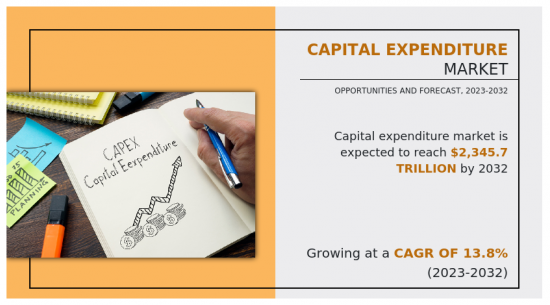
Capital expenditure is the total amount of money spent to upgrade, acquire, manage, repair, or maintain a company's physical assets such as land, machinery, plants, buildings, or technology. They are used during the business's conception as well as the launch of a branch, investment, or new project.
Moreover, the real estate industry continues observing increased demand from investors, companies looking to purchase or lease logistic assets, and manufacturing plants. Demand for modern warehouses, distribution hubs and manufacturing plants is directing sizable capital flows into commercial land purchases and construction of new facilities globally. Increased capital investments and spending dedicated to developing industrial and logistics real estate assets are driven by positive trends from reshoring, urbanization, and e-commerce.
In addition, surge in investments on greenfield facilities, new factories, production site modernization boosts the growth of the global capital expenditure market. In addition, factors such as shift to renewable power, clean fuels, and sustainable technologies necessitate significant Capex, and Capex allocation for emerging technologies such as AI, IoT, blockchain, cloud platforms have positively impacted the growth of the market. However, surge in geopolitical tensions, trade conflicts, and supply chain disruptions impact project timelines that hampers the market growth. On the contrary, rise in investment on large-scale infrastructure projects and 5G infrastructure rollouts by telecom providers are expected to offer remunerative opportunities for the expansion of the market during the forecast period. Each of these factors is projected to have a definite impact on the growth of the capital expenditure market.
The capital expenditure market is segmented by asset type, industry vertical, and region. In terms of asset type, the market is fragmented into BFSI, oil & gas, mining, healthcare, manufacturing, IT & telecom, and real estate. Depending on industry vertical, it is divided into land, buildings, equipment, software, vehicles, patents, and others. Region-wise, it is analyzed across North America, Europe, Asia-Pacific, and LAMEA.
The key players profiled in the capital expenditure market analysis are U.S. Bancorp, Regions Financial Corporation, Truist Financial Corporation, JPMorgan Chase & Co., HSBC Holdings plc, Citibank, Bank of America Corporation, PNC Financial Services Group Inc., Wells Fargo, and First Citizens Bank. These players have adopted various strategies to increase their market penetration and strengthen their position in the industry.
Key Benefits For Stakeholders
- This report provides a quantitative analysis of the market segments, current trends, estimations, and dynamics of the capital expenditure market analysis from 2022 to 2032 to identify the prevailing capital expenditure market opportunities.
- The market research is offered along with information related to key drivers, restraints, and opportunities.
- Porter's five forces analysis highlights the potency of buyers and suppliers to enable stakeholders make profit-oriented business decisions and strengthen their supplier-buyer network.
- In-depth analysis of the capital expenditure market segmentation assists to determine the prevailing market opportunities.
- Major countries in each region are mapped according to their revenue contribution to the global market.
- Market player positioning facilitates benchmarking and provides a clear understanding of the present position of the market players.
- The report includes the analysis of the regional as well as global capital expenditure market trends, key players, market segments, application areas, and market growth strategies.
Additional benefits you will get with this purchase are:
- Quarterly Update and* (only available with a corporate license, on listed price)
- 5 additional Company Profile of client Choice pre- or Post-purchase, as a free update.
- Free Upcoming Version on the Purchase of Five and Enterprise User License.
- 16 analyst hours of support* (post-purchase, if you find additional data requirements upon review of the report, you may receive support amounting to 16 analyst hours to solve questions, and post-sale queries)
- 15% Free Customization* (in case the scope or segment of the report does not match your requirements, 15% is equivalent to 3 working days of free work, applicable once)
- Free data Pack on the Five and Enterprise User License. (Excel version of the report)
- Free Updated report if the report is 6-12 months old or older.
- 24-hour priority response*
- Free Industry updates and white papers.
Possible Customization with this report (with additional cost and timeline, please talk to the sales executive to know more)
- Additional company profiles with specific to client's interest
- SWOT Analysis
Key Market Segments
By Asset Type
- Land
- Building
- Equipment
- Software
- Vehicles
- Patents
- Others
By Industry Vertical
- Oil and Gas
- BFSI
- Mining
- Healthcare
- Manufacturing
- IT and Telecom
- Real Estate
- Others
By Region
- North America
- U.S.
- Canada
- Europe
- UK
- Germany
- France
- Italy
- Spain
- Rest of Europe
- Asia-Pacific
- China
- Japan
- India
- Australia
- South Korea
- Rest of Asia-Pacific
- Latin America
- Brazil
- Argentina
- Rest of Latin America
- Middle East and Africa
- Gcc Countries
- South Africa
- Rest of Middle East And Africa
Key Market Players:
- U.S. Bancorp
- Regions Financial Corporation
- Truist Financial Corporation
- JPMorgan Chase & Co.
- HSBC Holdings plc
- Citigroup Inc.
- BANK OF AMERICA CORPORATION
- PNC Financial Services Group Inc.
- WELLS FARGO
- First Citizens Bank
TABLE OF CONTENTS
CHAPTER 1: INTRODUCTION
- 1.1. Report description
- 1.2. Key market segments
- 1.3. Key benefits to the stakeholders
- 1.4. Research methodology
- 1.4.1. Primary research
- 1.4.2. Secondary research
- 1.4.3. Analyst tools and models
CHAPTER 2: EXECUTIVE SUMMARY
- 2.1. CXO Perspective
CHAPTER 3: MARKET OVERVIEW
- 3.1. Market definition and scope
- 3.2. Key findings
- 3.2.1. Top impacting factors
- 3.2.2. Top investment pockets
- 3.3. Porter's five forces analysis
- 3.4. Market dynamics
- 3.4.1. Drivers
- 3.4.2. Restraints
- 3.4.3. Opportunities
CHAPTER 4: CAPITAL EXPENDITURE MARKET, BY ASSET TYPE
- 4.1. Overview
- 4.1.1. Market size and forecast
- 4.2. Land
- 4.2.1. Key market trends, growth factors and opportunities
- 4.2.2. Market size and forecast, by region
- 4.2.3. Market share analysis by country
- 4.3. Building
- 4.3.1. Key market trends, growth factors and opportunities
- 4.3.2. Market size and forecast, by region
- 4.3.3. Market share analysis by country
- 4.4. Equipment
- 4.4.1. Key market trends, growth factors and opportunities
- 4.4.2. Market size and forecast, by region
- 4.4.3. Market share analysis by country
- 4.5. Software
- 4.5.1. Key market trends, growth factors and opportunities
- 4.5.2. Market size and forecast, by region
- 4.5.3. Market share analysis by country
- 4.6. Vehicles
- 4.6.1. Key market trends, growth factors and opportunities
- 4.6.2. Market size and forecast, by region
- 4.6.3. Market share analysis by country
- 4.7. Patents
- 4.7.1. Key market trends, growth factors and opportunities
- 4.7.2. Market size and forecast, by region
- 4.7.3. Market share analysis by country
- 4.8. Others
- 4.8.1. Key market trends, growth factors and opportunities
- 4.8.2. Market size and forecast, by region
- 4.8.3. Market share analysis by country
CHAPTER 5: CAPITAL EXPENDITURE MARKET, BY INDUSTRY VERTICAL
- 5.1. Overview
- 5.1.1. Market size and forecast
- 5.2. Oil and Gas
- 5.2.1. Key market trends, growth factors and opportunities
- 5.2.2. Market size and forecast, by region
- 5.2.3. Market share analysis by country
- 5.3. BFSI
- 5.3.1. Key market trends, growth factors and opportunities
- 5.3.2. Market size and forecast, by region
- 5.3.3. Market share analysis by country
- 5.4. Mining
- 5.4.1. Key market trends, growth factors and opportunities
- 5.4.2. Market size and forecast, by region
- 5.4.3. Market share analysis by country
- 5.5. Healthcare
- 5.5.1. Key market trends, growth factors and opportunities
- 5.5.2. Market size and forecast, by region
- 5.5.3. Market share analysis by country
- 5.6. Manufacturing
- 5.6.1. Key market trends, growth factors and opportunities
- 5.6.2. Market size and forecast, by region
- 5.6.3. Market share analysis by country
- 5.7. IT and Telecom
- 5.7.1. Key market trends, growth factors and opportunities
- 5.7.2. Market size and forecast, by region
- 5.7.3. Market share analysis by country
- 5.8. Real Estate
- 5.8.1. Key market trends, growth factors and opportunities
- 5.8.2. Market size and forecast, by region
- 5.8.3. Market share analysis by country
- 5.9. Others
- 5.9.1. Key market trends, growth factors and opportunities
- 5.9.2. Market size and forecast, by region
- 5.9.3. Market share analysis by country
CHAPTER 6: CAPITAL EXPENDITURE MARKET, BY REGION
- 6.1. Overview
- 6.1.1. Market size and forecast By Region
- 6.2. North America
- 6.2.1. Key market trends, growth factors and opportunities
- 6.2.2. Market size and forecast, by Asset Type
- 6.2.3. Market size and forecast, by Industry Vertical
- 6.2.4. Market size and forecast, by country
- 6.2.4.1. U.S.
- 6.2.4.1.1. Market size and forecast, by Asset Type
- 6.2.4.1.2. Market size and forecast, by Industry Vertical
- 6.2.4.2. Canada
- 6.2.4.2.1. Market size and forecast, by Asset Type
- 6.2.4.2.2. Market size and forecast, by Industry Vertical
- 6.3. Europe
- 6.3.1. Key market trends, growth factors and opportunities
- 6.3.2. Market size and forecast, by Asset Type
- 6.3.3. Market size and forecast, by Industry Vertical
- 6.3.4. Market size and forecast, by country
- 6.3.4.1. UK
- 6.3.4.1.1. Market size and forecast, by Asset Type
- 6.3.4.1.2. Market size and forecast, by Industry Vertical
- 6.3.4.2. Germany
- 6.3.4.2.1. Market size and forecast, by Asset Type
- 6.3.4.2.2. Market size and forecast, by Industry Vertical
- 6.3.4.3. France
- 6.3.4.3.1. Market size and forecast, by Asset Type
- 6.3.4.3.2. Market size and forecast, by Industry Vertical
- 6.3.4.4. Italy
- 6.3.4.4.1. Market size and forecast, by Asset Type
- 6.3.4.4.2. Market size and forecast, by Industry Vertical
- 6.3.4.5. Spain
- 6.3.4.5.1. Market size and forecast, by Asset Type
- 6.3.4.5.2. Market size and forecast, by Industry Vertical
- 6.3.4.6. Rest of Europe
- 6.3.4.6.1. Market size and forecast, by Asset Type
- 6.3.4.6.2. Market size and forecast, by Industry Vertical
- 6.4. Asia-Pacific
- 6.4.1. Key market trends, growth factors and opportunities
- 6.4.2. Market size and forecast, by Asset Type
- 6.4.3. Market size and forecast, by Industry Vertical
- 6.4.4. Market size and forecast, by country
- 6.4.4.1. China
- 6.4.4.1.1. Market size and forecast, by Asset Type
- 6.4.4.1.2. Market size and forecast, by Industry Vertical
- 6.4.4.2. Japan
- 6.4.4.2.1. Market size and forecast, by Asset Type
- 6.4.4.2.2. Market size and forecast, by Industry Vertical
- 6.4.4.3. India
- 6.4.4.3.1. Market size and forecast, by Asset Type
- 6.4.4.3.2. Market size and forecast, by Industry Vertical
- 6.4.4.4. Australia
- 6.4.4.4.1. Market size and forecast, by Asset Type
- 6.4.4.4.2. Market size and forecast, by Industry Vertical
- 6.4.4.5. South Korea
- 6.4.4.5.1. Market size and forecast, by Asset Type
- 6.4.4.5.2. Market size and forecast, by Industry Vertical
- 6.4.4.6. Rest of Asia-Pacific
- 6.4.4.6.1. Market size and forecast, by Asset Type
- 6.4.4.6.2. Market size and forecast, by Industry Vertical
- 6.5. Latin America
- 6.5.1. Key market trends, growth factors and opportunities
- 6.5.2. Market size and forecast, by Asset Type
- 6.5.3. Market size and forecast, by Industry Vertical
- 6.5.4. Market size and forecast, by country
- 6.5.4.1. Brazil
- 6.5.4.1.1. Market size and forecast, by Asset Type
- 6.5.4.1.2. Market size and forecast, by Industry Vertical
- 6.5.4.2. Argentina
- 6.5.4.2.1. Market size and forecast, by Asset Type
- 6.5.4.2.2. Market size and forecast, by Industry Vertical
- 6.5.4.3. Rest of Latin America
- 6.5.4.3.1. Market size and forecast, by Asset Type
- 6.5.4.3.2. Market size and forecast, by Industry Vertical
- 6.6. Middle East and Africa
- 6.6.1. Key market trends, growth factors and opportunities
- 6.6.2. Market size and forecast, by Asset Type
- 6.6.3. Market size and forecast, by Industry Vertical
- 6.6.4. Market size and forecast, by country
- 6.6.4.1. Gcc Countries
- 6.6.4.1.1. Market size and forecast, by Asset Type
- 6.6.4.1.2. Market size and forecast, by Industry Vertical
- 6.6.4.2. South Africa
- 6.6.4.2.1. Market size and forecast, by Asset Type
- 6.6.4.2.2. Market size and forecast, by Industry Vertical
- 6.6.4.3. Rest of Middle East And Africa
- 6.6.4.3.1. Market size and forecast, by Asset Type
- 6.6.4.3.2. Market size and forecast, by Industry Vertical
CHAPTER 7: COMPETITIVE LANDSCAPE
- 7.1. Introduction
- 7.2. Top winning strategies
- 7.3. Product mapping of top 10 player
- 7.4. Competitive dashboard
- 7.5. Competitive heatmap
- 7.6. Top player positioning, 2022
CHAPTER 8: COMPANY PROFILES
- 8.1. U.S. Bancorp
- 8.1.1. Company overview
- 8.1.2. Key executives
- 8.1.3. Company snapshot
- 8.1.4. Operating business segments
- 8.1.5. Product portfolio
- 8.1.6. Business performance
- 8.1.7. Key strategic moves and developments
- 8.2. Regions Financial Corporation
- 8.2.1. Company overview
- 8.2.2. Key executives
- 8.2.3. Company snapshot
- 8.2.4. Operating business segments
- 8.2.5. Product portfolio
- 8.2.6. Business performance
- 8.2.7. Key strategic moves and developments
- 8.3. Truist Financial Corporation
- 8.3.1. Company overview
- 8.3.2. Key executives
- 8.3.3. Company snapshot
- 8.3.4. Operating business segments
- 8.3.5. Product portfolio
- 8.3.6. Business performance
- 8.3.7. Key strategic moves and developments
- 8.4. JPMorgan Chase & Co.
- 8.4.1. Company overview
- 8.4.2. Key executives
- 8.4.3. Company snapshot
- 8.4.4. Operating business segments
- 8.4.5. Product portfolio
- 8.4.6. Business performance
- 8.4.7. Key strategic moves and developments
- 8.5. HSBC Holdings plc
- 8.5.1. Company overview
- 8.5.2. Key executives
- 8.5.3. Company snapshot
- 8.5.4. Operating business segments
- 8.5.5. Product portfolio
- 8.5.6. Business performance
- 8.5.7. Key strategic moves and developments
- 8.6. Citigroup Inc.
- 8.6.1. Company overview
- 8.6.2. Key executives
- 8.6.3. Company snapshot
- 8.6.4. Operating business segments
- 8.6.5. Product portfolio
- 8.6.6. Business performance
- 8.6.7. Key strategic moves and developments
- 8.7. BANK OF AMERICA CORPORATION
- 8.7.1. Company overview
- 8.7.2. Key executives
- 8.7.3. Company snapshot
- 8.7.4. Operating business segments
- 8.7.5. Product portfolio
- 8.7.6. Business performance
- 8.7.7. Key strategic moves and developments
- 8.8. PNC Financial Services Group Inc.
- 8.8.1. Company overview
- 8.8.2. Key executives
- 8.8.3. Company snapshot
- 8.8.4. Operating business segments
- 8.8.5. Product portfolio
- 8.8.6. Business performance
- 8.8.7. Key strategic moves and developments
- 8.9. WELLS FARGO
- 8.9.1. Company overview
- 8.9.2. Key executives
- 8.9.3. Company snapshot
- 8.9.4. Operating business segments
- 8.9.5. Product portfolio
- 8.9.6. Business performance
- 8.9.7. Key strategic moves and developments
- 8.10. First Citizens Bank
- 8.10.1. Company overview
- 8.10.2. Key executives
- 8.10.3. Company snapshot
- 8.10.4. Operating business segments
- 8.10.5. Product portfolio
- 8.10.6. Business performance
- 8.10.7. Key strategic moves and developments






